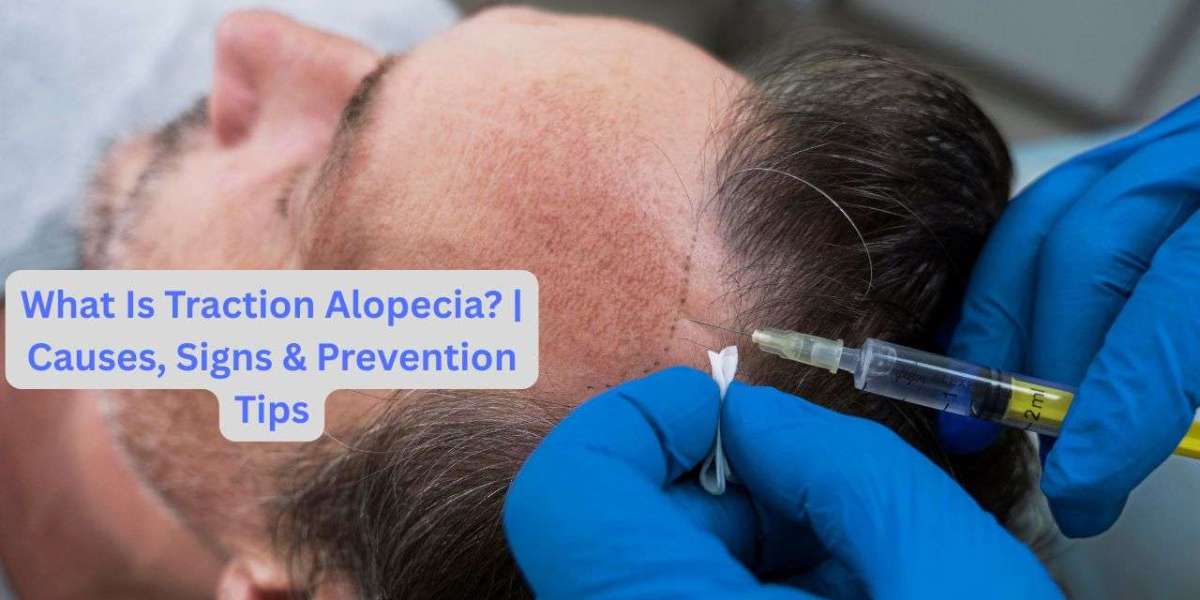Hair loss can be emotionally difficult, especially when its triggered by everyday styling routines that appear harmless. One often overlooked type of hair loss is traction alopeciaa condition triggered by constant pulling or tension on the hair. It typically, affects the edges of the scalp and hairline, and can impact anyone who frequently wears tight hairstyles, such as braids, ponytails, buns, or extensions.Understanding this condition early is vital, as timely care and simple adjustments to your hair routine can prevent long-term or even permanent damage. Lets take a closer look at what traction alopecia is, its causes, how to recognize its symptoms, and the steps you can take to protect your hair.
What Is Traction Alopecia?
What is traction alopecia? It is a type of hair thinning that results from repeated tension or stress on the hair follicles. Over time, this continuous strain weakens the follicles, causing hair to thin, break or even fall out permanently. The condition most often develops along the front hairline, temples, and edges of the scalpareas that experience the most pulling. While anyone can be affected, it is particularly common in individuals who frequently wear tight hairstyles for fashion convenience or professional reasons. Recognising the early signs is vital as timely intervention can help prevent lasting damage and support healthier hair growth.
Common Causes of Traction Alopecia
Traction alopecia most often results from hairstyles that constantly pull or strain the hair follicles. Tight ponytails, braids, cornrows, or buns are prime examples of styles that pull the hair too firmly. Over time, this repeated tension damages the follicles, preventing new hair from growing properly. Hair extensions and weaves can also play a major role, particularly when theyre installed too tightly or left in place for long periods. Even everyday accessorieslike rubber bands, clips, and headbandscan contribute to the issue if they constantly tug at the hair. People who regularly wear helmets or headgear for work or sports might experience hair thinning in areas where pressure is applied. Recognising these risk factors early is essential for preventing further hair loss.
Symptoms to Watch For
Recognizing traction alopecia early can greatly improve the effectiveness of treatment. The condition often starts with subtle signs that gradually become more apparent. Common symptoms include:
Gradual thinning along the hairline or edges of the scalp
Redness, irritation, or small bumps in affected areas
Tenderness or soreness when touching the scalp
Hair breakage or patchy loss in areas prone to tension
If you notice any of these signs, its important to take them seriously. Early actionthrough lifestyle adjustments and professional guidance, such as consulting a hair restoration specialistcan help repair damage and prevent permanent hair loss.
Tips for Prevention and Hair Care
Preventing traction alopecia focuses on minimizing stress on your hair and scalp. Begin by avoiding consistently tight hairstyles and alternating with looser styles, allowing your hair regular breaks to recover from tension. Use gentle hair accessories that dont pull or tug, and steer clear of harsh chemical treatments that can weaken hair strands. Maintaining a healthy scalp is equally importantkeep it clean, moisturised, and nourished to support strong hair growth. If you notice early signs of thinning or scalp irritation, consulting the experts at BHHR can help. They can assess the severity of hair damage and recommend suitable non-surgical solutions or advanced restoration treatments tailored to your hair.
Conclusion
Understanding traction alopecia is crucial for preventing permanent hair damage. By learning about its causes, signs and preventive strategies you can make small yet impactful changes to your daily hair care routine. Steering clear of overly tight hairstyles, opting for gentler hair accessories, and maintaining a healthy scalp regimen all help promote stronger, healthier hair. If hair loss has already progressed or you need professional guidance, consulting the experts at BHHR can provide valuable support. Early awareness combined with consistent care is essential for preserving your hairs natural strength, encouraging long-term growth, and boosting your confidence.













